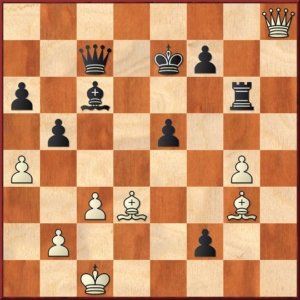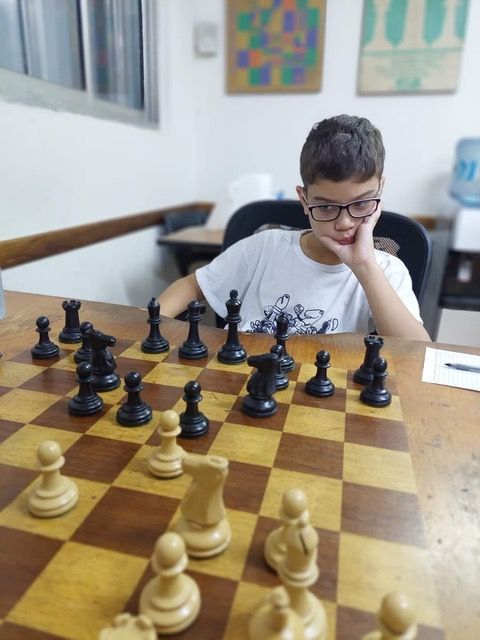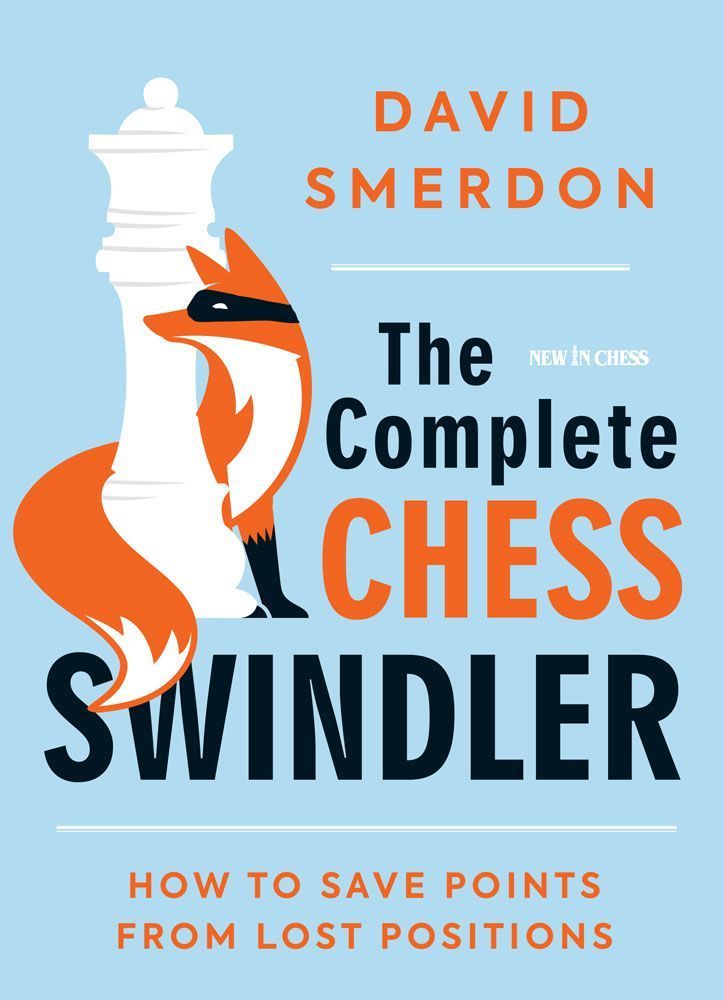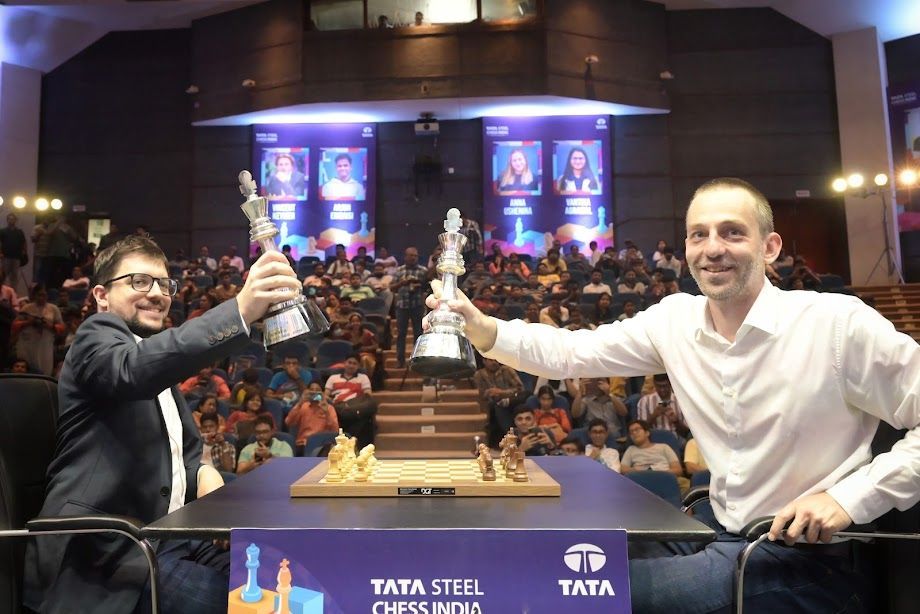Going for Broke
The mercurial Bobby Fischer, although admitting that he did like to break a player’s ego, once said that he did not believe in psychology, instead preferring good moves. But chess is above all a battle, and often a player’s spirit can be crushed by a timely psychological blow; even more so when the psychological blow comes in a matchplay scenario.
The most famous recent example came in December 2021, with Magnus Carlsen winning the longest game ever in World Championship history, and a sore loss that his challenger, Ian Nepomniachtchi, just never recovered from. Nepo was portrayed by the global media as being a broken man after the psychological blow of losing that fateful game six that lasted 136 move game and over nearly eight hours of intense play.

And that, in a nutshell – though on a lesser scale and timeframe – is basically what happened with Wesley So’s victory in the first-ever Chess.com Global Chess Championship, as he easily dominated his opponent, Nihal Sarin, to take the inaugural title and $200,000 first prize. So won the opening game of the scheduled two-day, eight-game match, and that win set the tone for the rest of the final.
And perhaps sensing his opponent’s insecurity by losing the opening game, things got just that little bit more ‘interesting’ in game 3, as So went for a speculative early exchange sacrifice that led to lots of complications for the 18-year-old Indian prodigy. Sarin weathered the early storm and looked for a fleeting moment to be on the cusp of winning to tie the match — but after allowing his big material and positional advantage to slip through his fingers, Sarin just couldn’t accept that he was no longer winning the game, and suffered a further psychological blow of, somehow managing to alchemising over the space of just a few moves first the win, a draw, and then a loss.

Yet despite the organiser’s putting a brave spin on the fact that it was a two-day match that consisted of eight games, and that he Indian teenager was known for making comebacks, Sarin just looked forlornly like a broken man after he failed to convert that fateful game 3.
And come the second day, it took So just two almost effortless games to wrap up the biggest financial win of his career, as Sarin was unable to land a blow.
GM Wesley So – GM Nihal Sarin
CGC KO Final (1.3)
Pirc Defence, 150 Attack
1.e4 g6 2.d4 Bg7 3.Nc3 d6 4.Be3
This is the standard position of the so-called “150 Attack”. In the 1980s, a new generation of English players – notably GM Michael Adams – began to experiment with this sharp line against the Pirc. The main idea being Be3, Qd2, Bh6, advance the h-pawn and then deliver mate. Naturally, this seemed too good to be true, and it was quickly dubbed the 150 Attack (a quirk of the English grading system, with 150 equating to an 1800 Elo), since it seemed that only a club player would use such a blatant caveman attacking system and expect the game to finish in checkmate. Over the years, there have been various refinements to the 150 Attack, mainly whether to play an early f2-f3 or h2-h3 and Nf3.
4…a6 5.Qd2 Nd7 6.h4 Here comes Harry!
6…h6 7.0-0-0 b5 8.f3 Bb7 9.a3 Rc8 10.Kb1 c5 11.dxc5 Nxc5 12.Nge2 Nd7 13.Nd5 Ngf6 14.Nxf6+ Nxf6 15.h5! Ripping open the h-file early-doors is often seen in the 150 Attack – but the big key to winning is the follow-up.
15…Nxh5 16.Rxh5!?! This is a very puzzling sacrifice in many ways from So, though a thematic one in such positions that does enough to bamboozle Sarin into eating up valuable time on his clock. The engine doesn’t rate it, but when it comes down to the psychology of the game, the exchange sacrifice does the job as it is just not that easy for Sarin to co-ordinate things. The safer option was 16.g4 forcing 16…Nf6 17.Bxh6 Nd7 18.Nd4 Be5 with a complex struggle ahead for both sides – but where’s the fun in that? 16…gxh5 17.Ng3 Rg8 A more spirited way to continue was with 17…h4! 18.Nh5 Rg8 19.Nxg7+ Rxg7 20.Bxh6 Rg8 21.Qf2 h3 22.gxh3 Rc5! 23.h4 Qc8 and Black’s rooks here are very active.
18.Nxh5 Bh8 19.g4 Qc7 20.c3 Rd8 Admittedly it is easier to play White here than the Black side – and when h6 does fall, Sarin needs to quickly organise a way to break his pieces out from the bind, otherwise he’ll just get overwhelmed.
21.Bd4 e5 Not an easy move to have to play, as it looks like it is locking the dark-squared bishop in on h8 – but the alternative 21…Bxd4 22.cxd4 Qb6 23.d5! is just going to lock the light-squared bishop out of the action and White will soon pick-off that h6-pawn for a likely winning-advantage.
22.Bf2 d5! Sarin has to strive to open the game up, otherwise So will just pick off the weak h6-pawn and take control.
23.Bh4 Rd7 24.Qxh6
It looks scary for Black, but Sarin seems to have it all under control… but it takes just one slip for disaster to lurk. 24…dxe4 25.Rxd7 Qxd7 26.Nf6+ Bxf6 27.Qxf6 exf3 And with that, everyone and their dog just accepted that Sarin was easily winning…but what chess can be a cruel game!
28.Kc1 Qc7 Nothing wrong with Sarin’s move per se, but killing was 28…e4! as there’s no answer to pushing on with …e3 and …e2 etc.
29.a4 Bc6
Sarin is now being uber-cautious here, and this just gives So hope of finding some tricks.
30.Bg3 Rg6
Best now was the little messy option of 30…bxa4 31.Bxe5 Qd7 32.Bc4 Bd5 33.Bxa6 Rg6 34.Qh8+ Ke7 35.Qh4+ f6 36.Qh7+ Bf7! and Black has everything covered and his pieces working together as a unit ,and should go on to easily win.
31.Qh8+ Ke7 32.Bd3 f2?
The one slip that So was looking for, and suddenly he’s back in the game again. The only winning try for Black was 32…Rf6 33.Bh4 Qd6! 34.g5 Rf4! 35.g6+ Rxh4 36.Qxh4+ Qf6 37.Qb4+ Ke8 38.Kd2 fxg6 and the three connected passed kingside pawns should lead Black to victory.
33.Bh4+ Kd6 34.Bxf2 What a reversal of fortunes for Sarin! He’s lost his game-winning f-pawn and now his king is left wandering dazed and confused in no-man’s land.
34…Re6
The rook has to stay on the third rank, as grabbing the g4-pawn with 34…Rxg4?? leads to instant disaster after 35.Qf6+ Kd5 36.Qf3+ e4 37.c4+!! bxc4 38.Qf5+ Qe5 (If 38…Kd6 39.Bc5#) 39.Bxc4+ Kd6 40.Qxg4 with an extra piece and a winning advantage. And note also that 34…e4?? loses on the spot to 35.Bg3+ etc.
35.Qf8+ Qe7 36.Qb8+ Qc7 37.Qf8+ Re7?
Admitting that you no longer have a win is one of the toughest things to do in chess – and here, Sarin really had to bite the bullet and accept the draw by repetition with 37…Qe7 38.Qb8+ Qc7 39.Qf8+ etc.
38.Bf5 It’s hard to be critical of the players in view of the mutual time-scramble – and not to mention whilst sitting in a comfortable armchair in front of an engine kibitzing all the winning lines to your scribe! – as it calmly points out the star move of 38.b4! is a clever computer fantasy looking to snare the Black king into a mating net, with the only escape being 38…Kd5 39.Qh6 Bb7 40.Bc5 Qd7 41.axb5 axb5 42.Qf6 Re6 43.Qf1! and the noose tightens, forcing 43…Ba6 (If 43…Bc6 44.c4+ bxc4 45.Bxc4+ Ke4 46.Qf5#) 44.Qg2+ e4 45.Qa2+! Ke5 46.Bd4+ Kd6 47.Qxa6+ Ke7 48.Bc5+ Kf6 49.Bxb5! winning.
38…bxa4 39.Qh6+ Kd5??
Sarin walks right into the minefield! The only way to survive was with 39…Re6! 40.Bxe6 fxe6 41.Qf8+ Kd7 42.Qf7+ Kc8 43.Qxe6+ Kb7 44.g5 Qg7 and the opposite-coloured bishops should see a draw.
40.Qd2+ Kc4 41.Qd3+ Kb3 42.c4+ Kb4 43.Qc3# 1-0










Copyright © 2024. First Move Chess. All Rights Reserved. Deigned and Hosted by JLT Web Design & Digital Marketing. Our Privacy Policy.


